Photographs 2021 by the author. [You may use these images without prior permission for any scholarly or educational purpose as long as you (1) credit the photographer and (2) link your document to the Victorian Web or credit it in a print document. Click on the images for larger pictures.]

Clissold Park from Clissold House.
Clissold Park in Stoke Newington was acquired for the public by the Metropolitan Board of Works, under the Clissold Park (Stoke Newington) Act 1887. Along with additions to Hampstead Heath, land at Vauxhall and open spaces elsewhere in the city, the 53-acre grounds were intended to provide the massively increased population of the area with fresh air and recreational facilities (see the Times report on the Charity Commissioners' work, starting "It pleases sentimental people..."). The purchase in Stoke Newington was prompted by a public outcry: the last lease-holders, the Crawshays, had sold the land, and plans were in place for its use for residential purposes. According to the Pall Mall Gazette of 23 July 1886, the plots had already been marked out when the government stepped in, prioritising quality of life over the provision of yet more housing (see "The Threat to Clissold Park""). This sort of "acquisition of private ground for public benefit" was "[a] notable development" in this period, say Bridget Cherry and Nikolaus Pevsner 57).

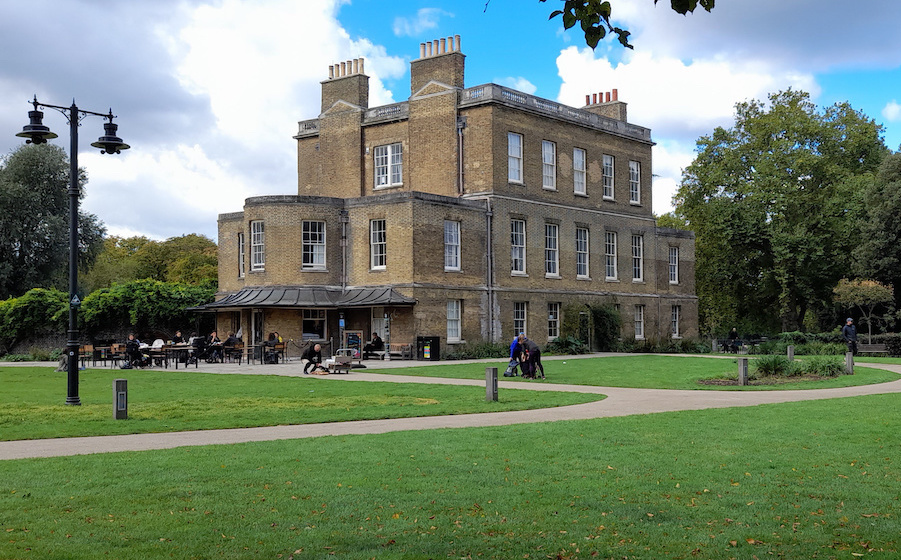
Left: Clissold House, front elevation. Right: Clissold House, a view of the back.
The Grade II* listed house which overlooks it is thought to have been designed by the Quaker architect Joseph Woods (1776-1864) for his uncle, Jonathan Hoare, of the famous banking family. It stood next to the old St Mary's Church — which is still there, although the new church, seen above left, towers above it. The house is a sturdy building with wings, two storeys at the west front but three at the back, where the ground level is lower. The front, however,is much more impressive, high on its mount with a row of impressive doric columns supporting a balcony. It was originally called Paradise House. It is now used as a refreshment centre, and for other community purposes.
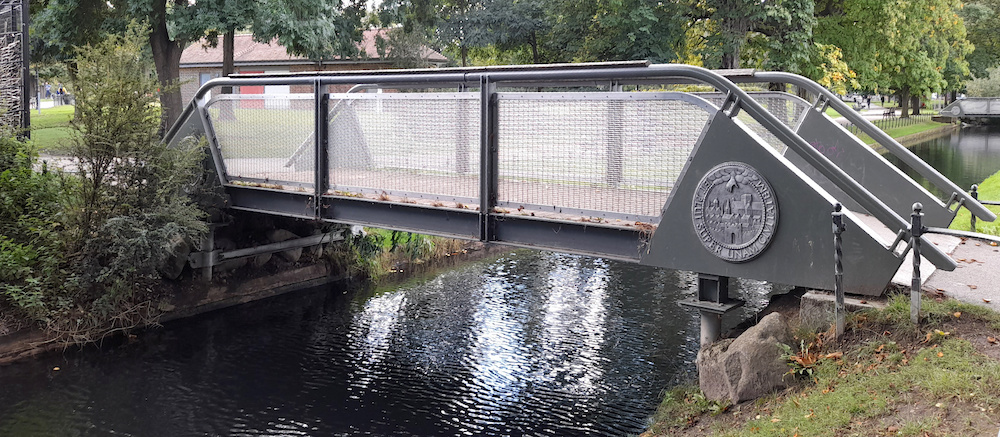
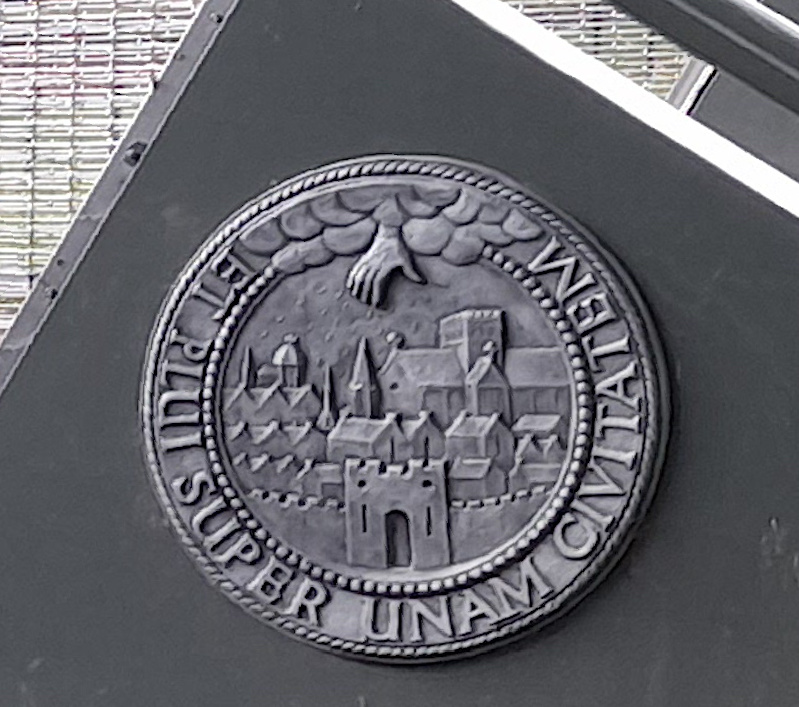
Left: Bridge across the New River, to the deer-park and animal enclosures. Right: The New River Co. seal.
Then as now, the house overlooked pleasure grounds which were partly landscaped by the clay pits from which its bricks were sourced, and which were then filled to become ponds; and partly by the New River winding through the estate. As the Times explained "[f]eatures were added to the park and it was opened on 24 July 1889 by the London County Council as a public park." The river itself, which was already there, is not a natural one: it is an early seventeenth-century aqueduct built to carry drinking water from Hertfordshire into London. It terminates here now. The late nineteenth-century bridge carries the seal of the old New River Company, now incorporated into the Metropolitan Water Board. A hand reaches down from the clouds to a cityscape, in a scene encircled by the Latin motto ("Et Plui Super Unam Civitatem") translates as "And I rained upon one city." [Close-up of seal.]
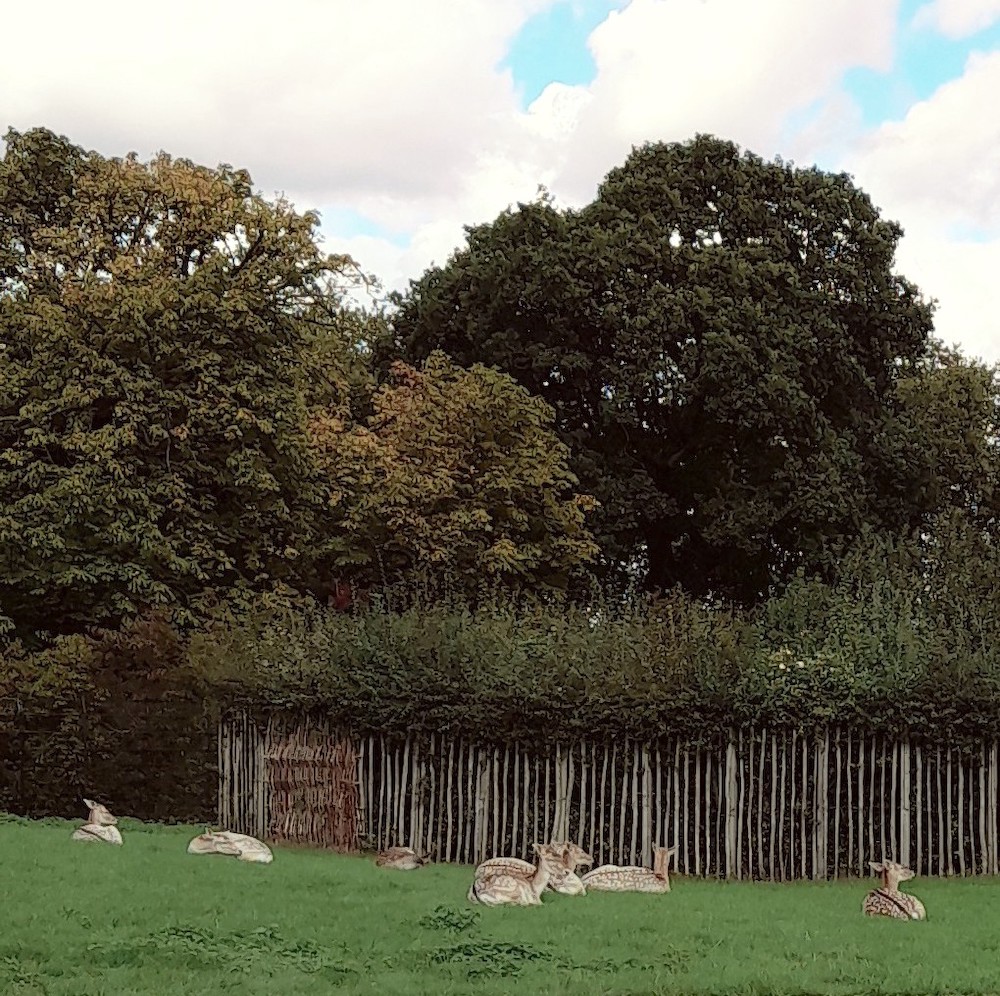
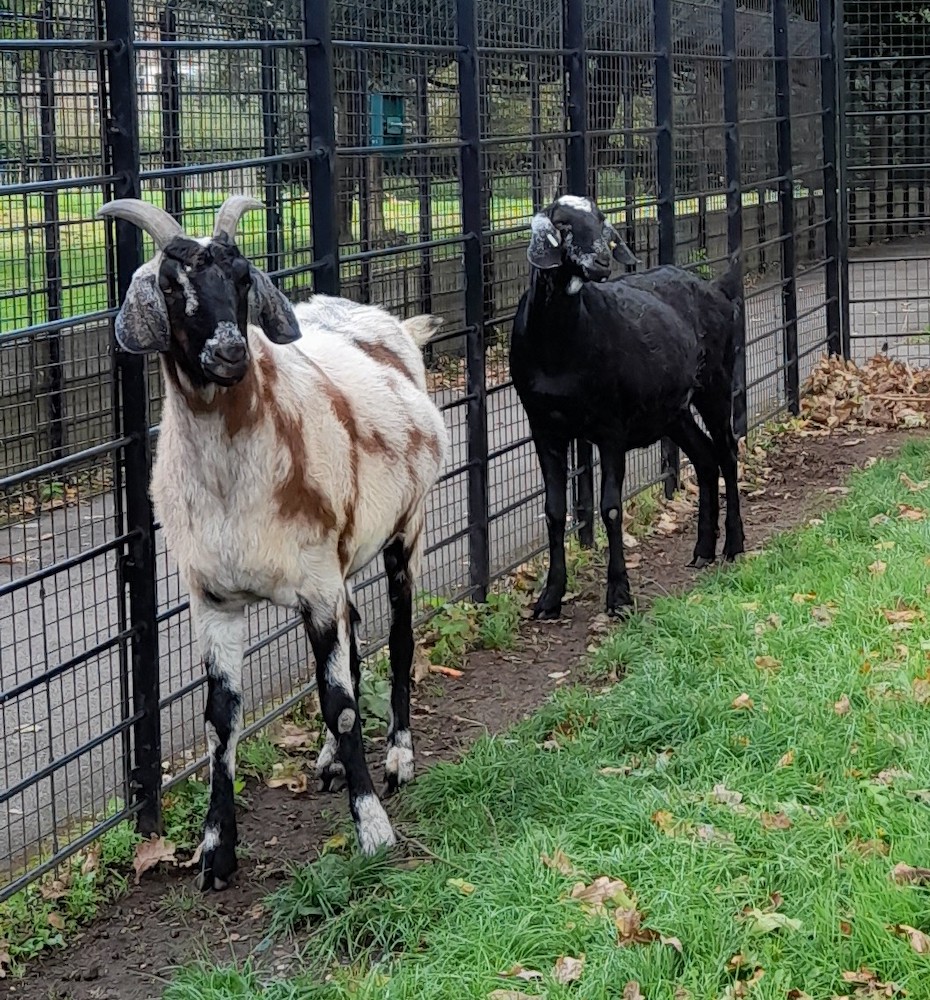
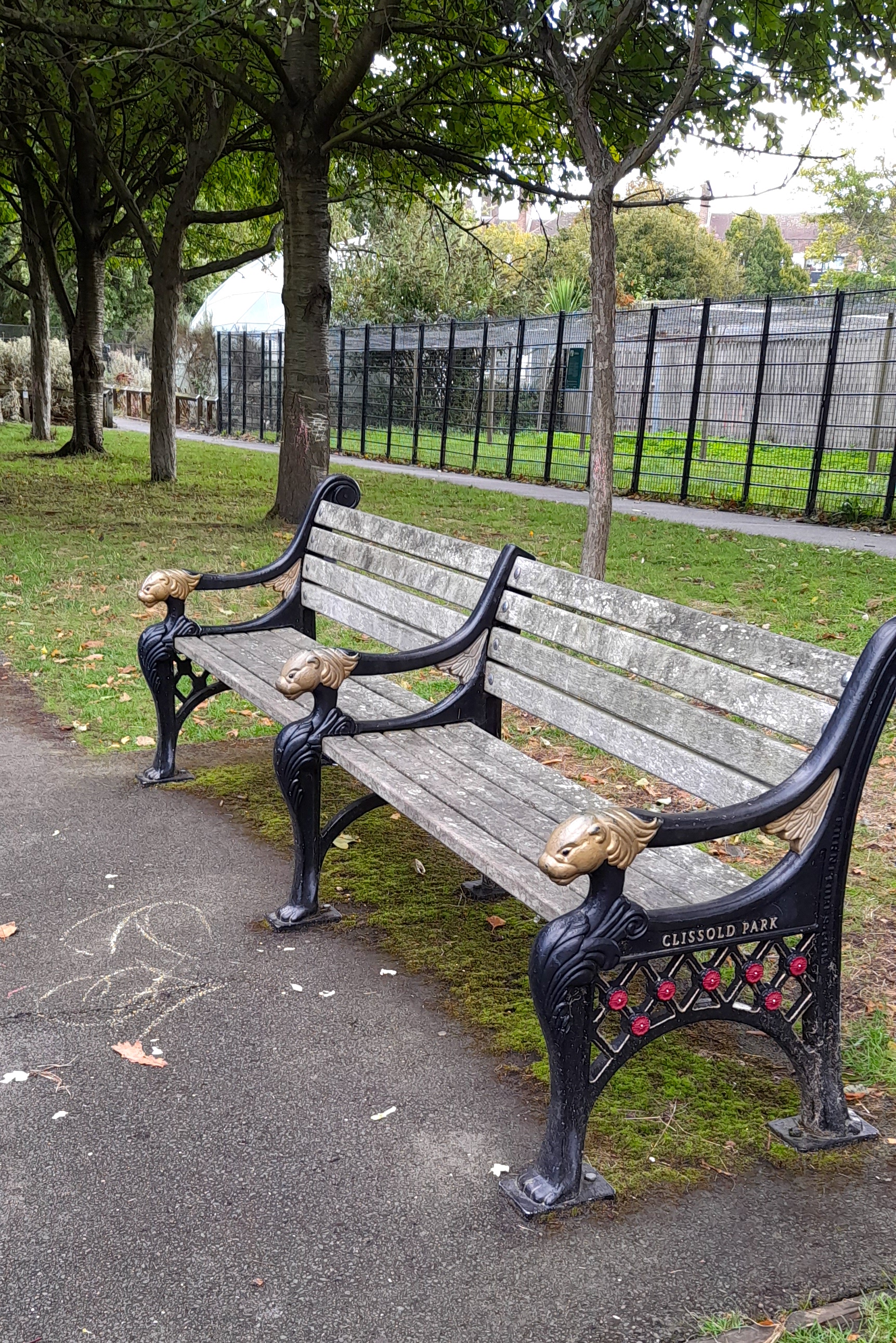
Left to right: (a) Deer resting in the deer-park. (b) Friendly goats in an enclosure. (3) One of a liberal supply of Clissold Park benches with lion's head armrests.
Accessed by the bridge, and within the loop of the river, are a deer-park, aviary and other animal enclosures — a small zoo. Complementing the great variety of trees here, this provides an opportunity for city children to experience the natural world at first hand. Other features of the park include a pleasure ground, which used to be a rose garden, and a children's play area. There are many attractive cast-iron benches, although there is some question now about their height, and suitability for older visitors (see "News").
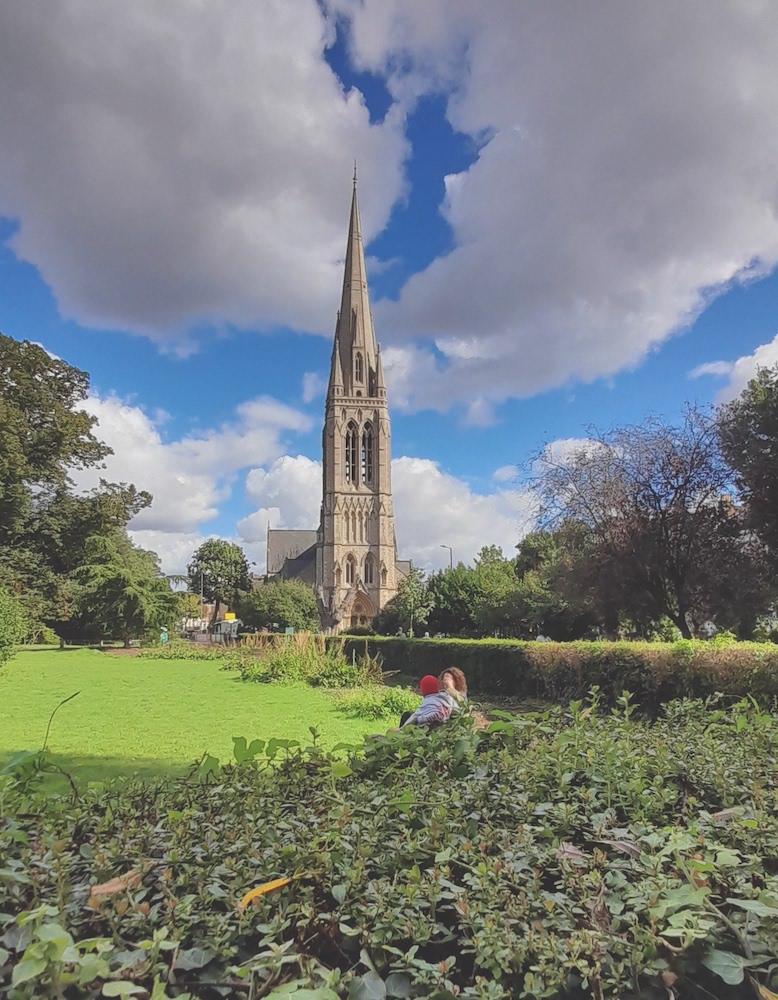
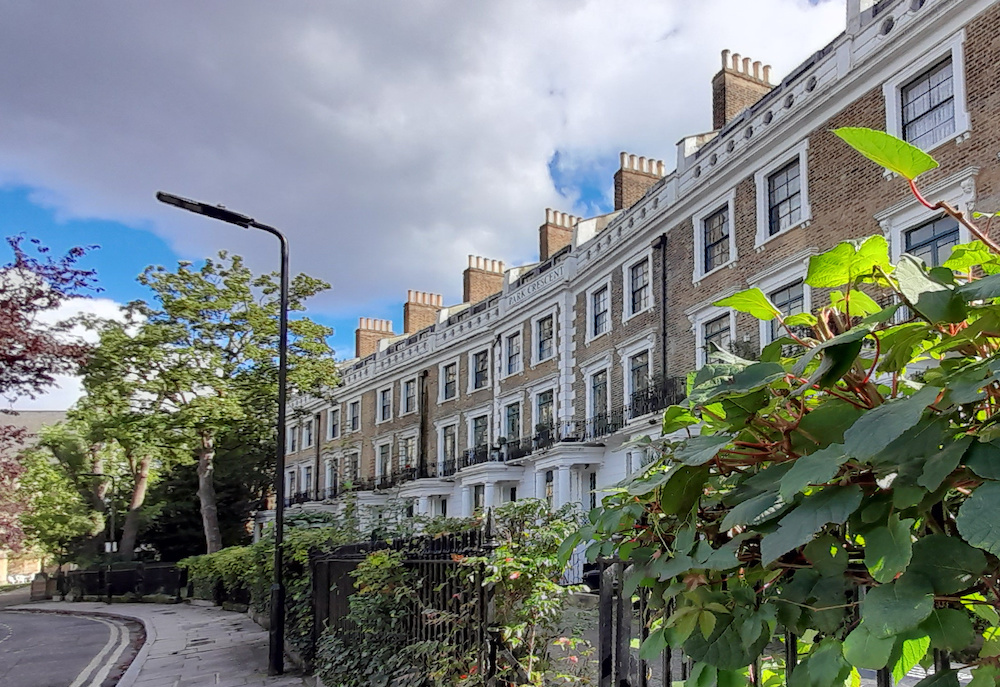
Left: Looking across the edge of the park to St Mary's (new) church. Right: The houses of Park Crescent on Church Street.
The park was named after the Revd Augustus Clissold, who had been a curate at the old St Mary's, and had wanted to marry one of the Crawshays' daughters (see Weinreb et al. 196). The Crawshays had opposed the marriage, and it was only after their death, when the daughter inherited the house, that the couple could marry. Their wedding took place at the old church in 1835. Augustus became a prominent follower of Emanuel Swedenborg. After he died the house returned to the Crawshay line. The last Crawshays to live there were George and Eliza Crawshay. George initiated the use of the grounds by the public by opening part of them "on certain days" for the enjoyment of local people (see "The Threat to Clissold Park").
The park is pleasantly situated, with the two churches nearby and some fine three-storey Grade II-listed facing it, on the perimeter. These were built from the early to the mid-nineteenth century. Perhaps the architect took his cue from John Nash's elegant Park Crescent similarly situated by Regent's Park. It was and is a highly desirable place to live.
Link to related material
- Rose Mary Crawshay's memorial drinking fountain on the back of Clissold House
- Lion's head bench (close-ups)
Bibliography
Baggs, A. P., Diane K Bolton and Patricia E. C. Croot. Stoke Newington: Other estates." A History of the County of Middlesex: Volume 8, Islington and Stoke Newington Parishes. Edited by T. F. T. Baker and C. R. Elrington. London: Victoria County History, 1985): 178-184. British History Online. Web. 17 October 2017.
Cherry, Bridget, and Nikolaus Pevsner. London 4: North. New Haven and London: Yale University Press, 2002.
Clissold Park. Historic England. Web. 17 October 2021.
"It pleases sentimental people to speak of stony-." Times. 18 April 1890: 9. Times Digital Archive. Web. 17 October 2017.
"News." Clissold Park. Web. 17 October 2021.
Park Crescent. Historic England. Web. 17 October 2021.
"The Threat to Clissold Park." Local Local History (a useful project displaying a wealth of local information, illustrated with contemporary handbills, engravings etc, run by Jack Whitehead). Web. 17 October 2021.
Weinreb, Ben, Christopher Hibbert, Julia Keay and John Keay. The London Encyclopaedia. New ed. London: Macmillan, 2008.
Created 18 October 2021